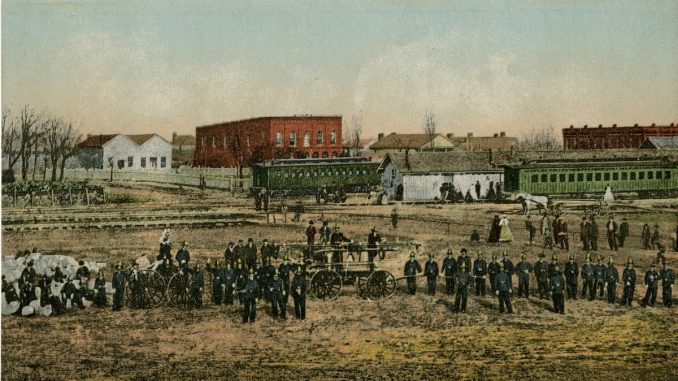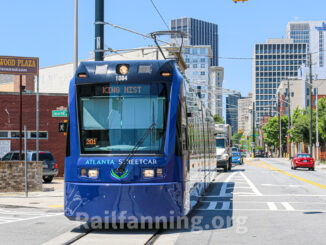
Atlanta was a city of approximately 2,500 residents in 1850, and the Western & Atlantic and Georgia railroads shared Atlanta’s first train station.
Col. Stephen Harriman Long, the chief engineer of the state-owned Western & Atlantic Railroad, and his team had identified the area that would become Atlanta. Today, the city is the economic engine of the southeast.
Ironically, Long thought the area would be nothing more than a railroad crossroad, and he opted to set up shop in the city of Marietta, Georgia. “The Terminus will be a good location for one tavern, a blacksmith shop, a grocery store, and nothing else,” he is often quoted as saying.
At its southern end, the community that grew up around the railroad was initially named Terminus. It was renamed Marthasville in 1843 and Atlanta in 1847. The original city’s limits extended a mile-and-a-half in every direction from the railroad depot built on the site.
While he might have misjudged how important the southern end of the line would grow to become, he did not underestimate the importance of the Western & Atlantic Railroad. Long surveyed the route starting on May 12, 1837, and finishing in November 1840.
Construction on the railroad began in March 1838, proceeding slowly at first. It took 12 years to complete.
As the Western & Atlantic grew, it needed more extensive facilities in Atlanta and Chattanooga, Tennessee.
“I found the Depot Buildings at both ends of the Road, and many of the Ware-Houses at Way-Stations, entirely inadequate for our business,” General Superintendent William M. Wadley wrote in a September 30, 1852, report.
Soon after that, the Western & Atlantic Railroad hired Edward A. Vincent to design a modern railroad terminal in Atlanta.
The Western & Atlantic’s four-track Car Shed opened in 1853 and served the Atlanta & West Point, Georgia and Macon & Western railroads. Colloquially known as the Car Shed, the depot stood in State Square, Atlanta’s central square before the Civil War.
As Sherman prepared to depart Atlanta in November 1864 for his “March to the Sea,” he ordered the destruction of the railroad buildings in Atlanta, including the Car Shed.




